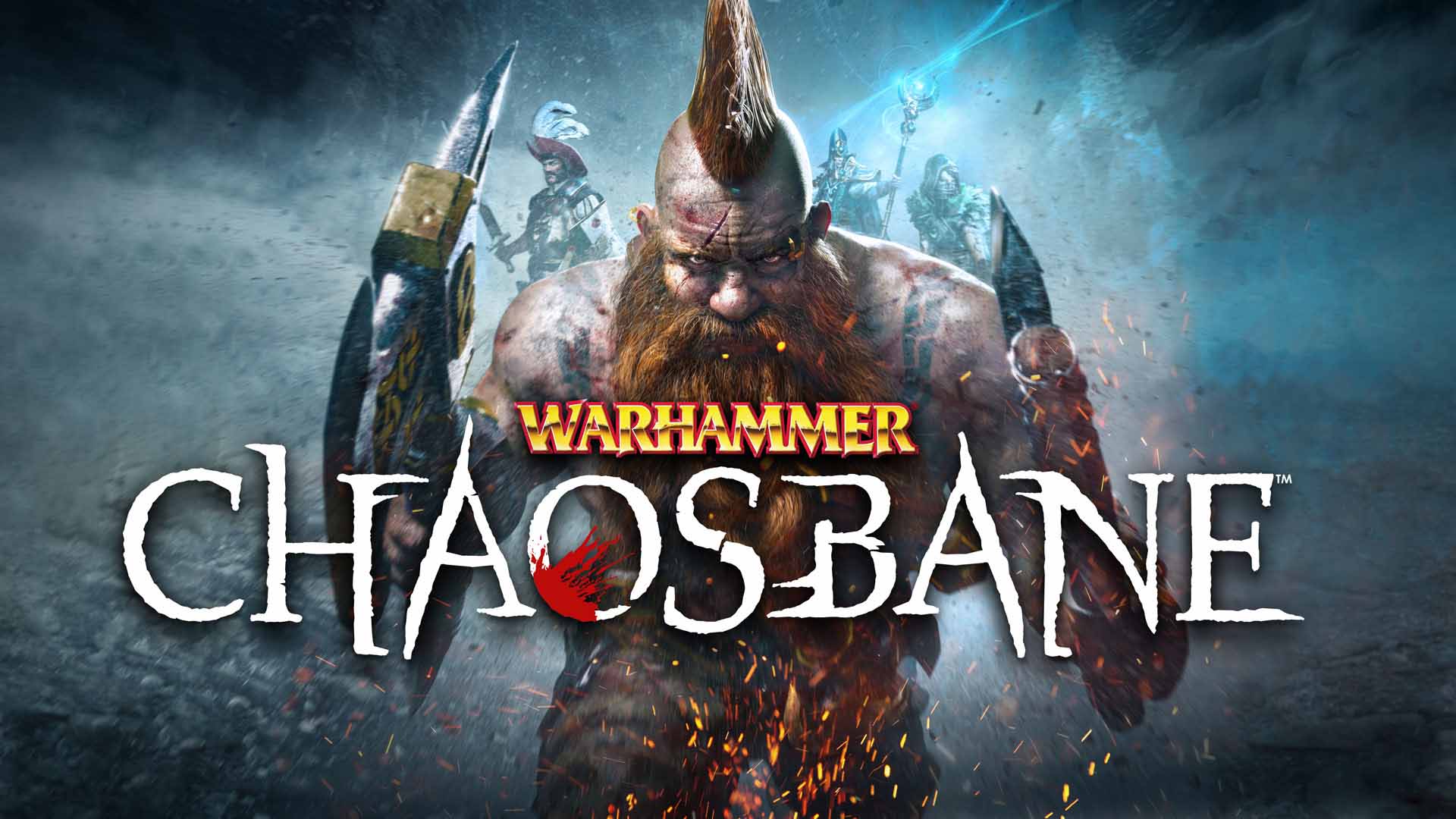
Back in March, I did a preview for Eko Software and Bigben Interactive’s Warhammer: Chaosbane, the first real ARPG based on Warhammer Fantasy. Being a tabletop miniature games nerd, I was really excited to play a proper hack ‘n slash looter RPG in the pre-Age of Sigmar Old World. Unfortunately, my initial impressions from the beta were very lukewarm. The game controlled like absolute garbage on a keyboard and mouse, and there were lots of other little issues that took away from what otherwise seemed like a promising game. Now that Chaosbane is less than a week away from release, I’ve had a chance to play the full version. Chaosbane has improved significantly since its initial beta, but unfortunately, many of its core problems still linger. Read on to find out why!
Warhammer: Chaosbane
Publisher: Bigben Interactive
Developer: Eko Software
Platforms: Windows PC (Reviewed), PS4, Xbox One
Release Date: June 4th, 2019
Players: 1-4
Price: $49.99
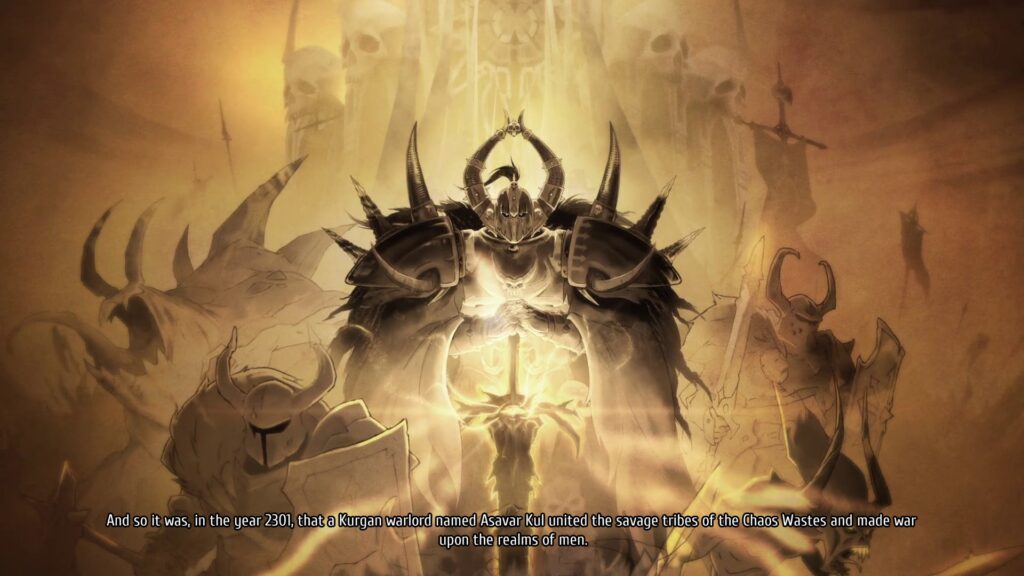
Warhammer: Chaosbane is set in the immediate aftermath of the Great War Against Chaos. Magnus the Pious has just reunited the Empire and slain the Chaos Lord Asavar Kul in single combat.
The remnants of Kul’s army are in full retreat, and Magnus begins the task of rebuilding the cities ravaged by the war. Victory is short lived, however, as Magnus’ tower is assaulted by a Chaos cult, and Magnus himself is placed under a deadly curse by a Chaos sorceress.
You play as one of four champions that rose to prominence for their extraordinary deeds during the war: Konrad Vollen the Imperial Captain, Bragi Axebiter the Dwarf Slayer, Elessa the Wood Elf Ranger, and Elontier, the High Elf Wizard.
I played as Konrad during the betas, so I decided to change things up and pick Bragi for the main game because Slayers are objectively the coolest dwarves in Warhammer.
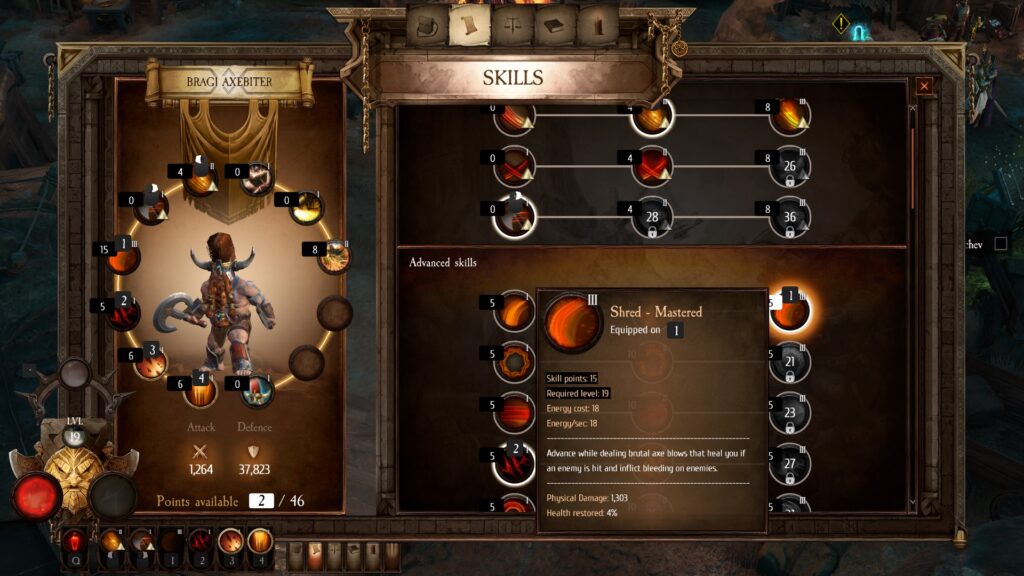
I’m really glad I did too, because Bragi was way more fun than Konrad. In fact, I’m starting to think that a lot of my initial negative impressions could have been that I simply didn’t realize how bland the character I played during the beta was. Bragi is a fast, mobile brawler that excels at jumping right into the middle of a horde and turning into a tornado of wide, sweeping axe blades.
Each character has a special trait bound to Spacebar, and in Bragi’s case its a chain axe that sends him flying to wherever your cursor is pointing. You can use it to quickly engage your enemies, or escape when you are being overrun. Bragi plays exactly like what Warhammer fans would expect from a Slayer, and it’s awesome.
My biggest gripe during my preview was the poor mouse controls and pathfinding. Luckily, those issues were gradually addressed in later betas, and are little more than an unpleasant memory in the final game.
There’s still a few hiccups here and there where your character doesn’t go where you want them to, or they get hung up on level geometry, but its nowhere near as bad as it used to be. The enemy AI still has some pathfinding issues though, and will occasionally run past you or stand around waiting to be killed.
While the controls have been addressed and Chaosbane runs smoothly on my machine, there’s still a lot that needs to be done to make it a proper PC game. There’s absolutely no graphics options whatsoever, and many of the settings that do exist require a game restart to implement. If you are on a lower end system and run into performance issues, well, there’s really nothing you can tweak in the settings to help you out.
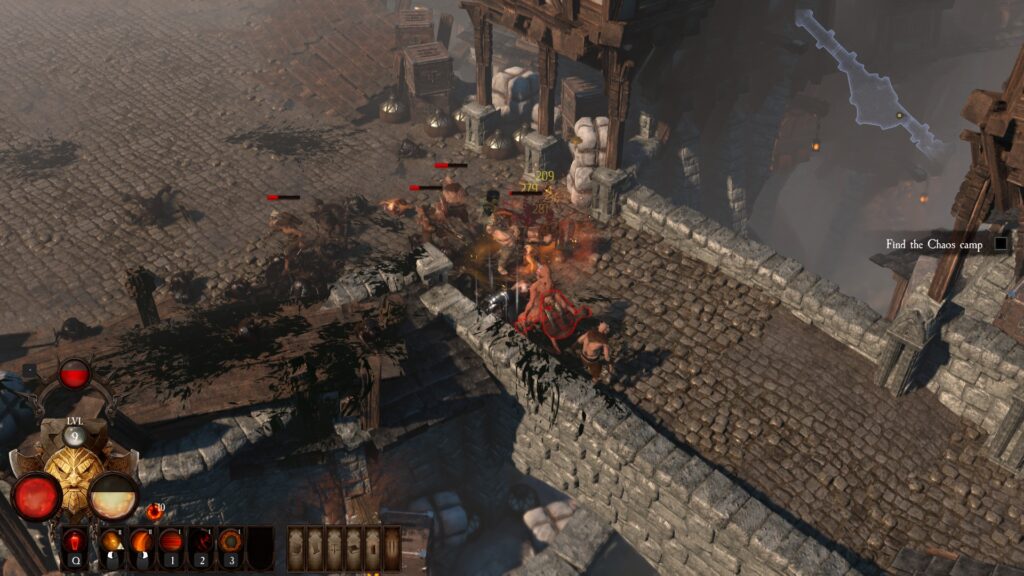
That said, the improvements to the game’s mouse and keyboard controls mean that I can actually have a decent amount of fun with the game’s combat. Each character has several basic skills that build up your energy as you deal damage. You then spend your energy to use your more powerful special abilities.
In Bragi’s case, these are things like AOE ground slams, whirling cyclones of axe strikes, or battle cries that can buff himself and nearby allies. Unsurprisingly, as you level up, you gain access to more abilities, though Chaosbane has a fairly different take on character building than most games in the genre.
Essentially, character building is based around creating a loadout of skills. You can have six active skills equipped at once, as well as a handful of passives. Each ability costs a certain amount of skill points to equip.
You’ll gain more skill points as you level up and complete quests, and there’s no penalty for tweaking your current loadout. Each skill has three levels, with the second and third ones basically being buffed up versions of the skill that cost more points to equip.
It takes a while for the system to really open up due to the limited number of skills you’ll have early on in the game, but eventually you’ll get to the point where you can start really customizing your build and making more meaningful decisions. You could, for example, fill all your skill slots with level one skills, or focus on a few stronger skills that cost more to equip.
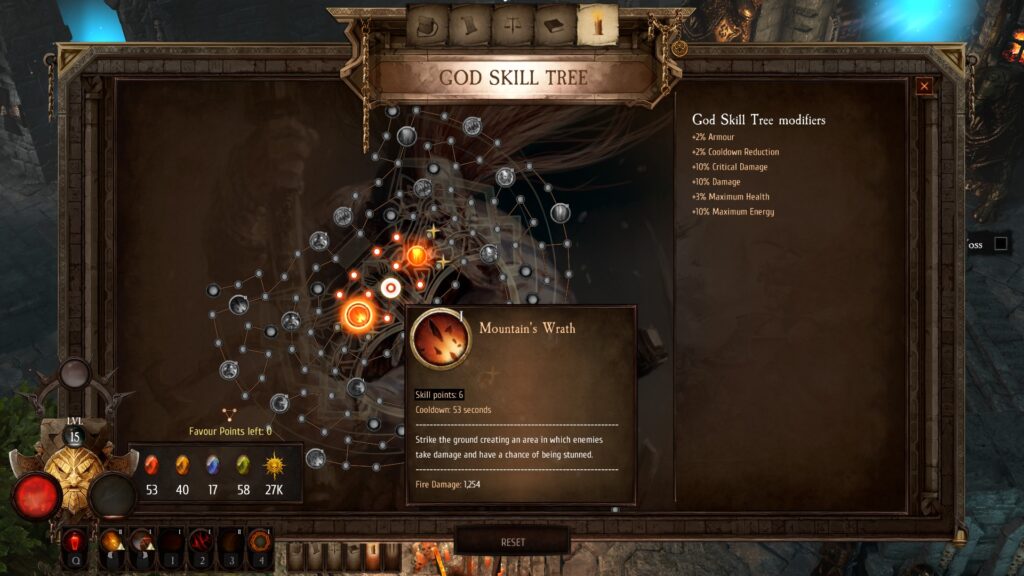
The other main aspect of character progression is the God Skill Trees. Each character has a unique, fairly large skill tree based around the god that character worships. You spend favor points and shards dropped by enemies or awarded for completing quests to purchase skills from the tree.
Most of them are small, percentile-based passive buffs, like 1% more damage here or 2% more armor there. However, there’s also extremely powerful special abilities or larger passive buffs to unlock. These skills tend to have fairly long cooldowns, but can potentially completely turn a fight around.
My favorite so far is one where Bragi stomps the ground to create an aura that deals steady fire damage to nearby enemies for several seconds. Its extremely satisfying to use, and often just melts hordes of lesser enemies trying to swarm you.
Speaking of extremely powerful abilities, each character also has a bloodlust meter. As you deal damage and kill enemies, you’ll gradually build up your rage. When its full, you can unleash a devastating barrage of supped-up special attacks, turning each character into an unstoppable murder machine for a few seconds.
The meter takes so long to charge that you’ll probably only ever get to use the ability once or twice per level, but when you do, you’ll reduce almost anything to a fine, bloody pulp.
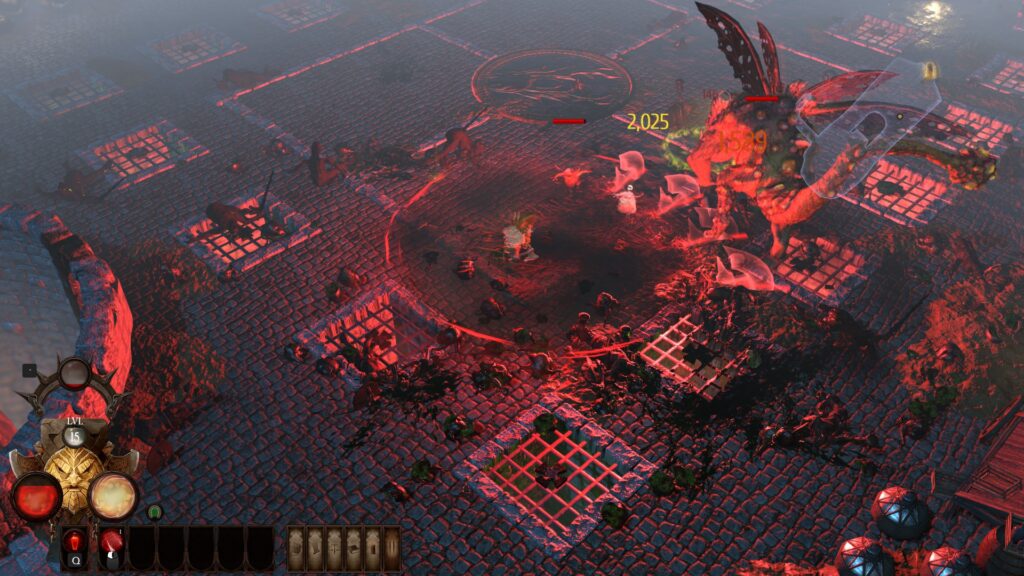
While there’s no denying that the combat in Chaosbane is pretty fun, in no small part due to the game’s meaty sound effects and well-animated interpretations of famous creatures and units from the Old World. I have to admit that the game still has its fair share of large, glaring issues.
As I said in my original preview, one of the most disappointing things about Chaosbane is that there’s nothing to really explore. Each hub area exists solely as a place you return to between quests, and there really isn’t anything to do there.
It takes a long time before you start gaining access to vendors and other side activities, and for the most part you’ll just be accepting fairly bland story quests from one of the game’s main characters.
Once you do go on a quest, it’s nothing more than a self-contained collection of copy-pasted areas and rooms. Prepare to see the same level chunks over and over again. Even when you go to a completely new region with a different tile set, it won’t take long before you start seeing the same area layouts repeated again.
It’s a shame, because the environments themselves look nice and perfectly capture the gritty and grim world of Warhammer Fantasy, but it gets very tiring seeing the same areas repeated every single quest.

This repetition extends to many of the game’s encounters as well. Fighting the same hordes of enemies is to be expected in a ARPG like this, but Chaosbane likes to repeat its bosses and mini-bosses as well. One level in the sewers of Nuln has you fight a Chaos cult leader, which is essentially a tougher version of your standard cultist with some unique attacks that serves as a mini-boss at the end of the quest.
The very next level has like five of them scattered around the sewers, and they eventually become a moderately common sight in the final levels set in Nuln. The Beast of Nurgle is another example. You first encounter one as a pretty tough boss encounter, and by the time you finish with the first act of the game, you’ll have encounters where you have to fight three at once.
Chaos Spawns start as an uncommon special enemy, and eventually become something you fight six or seven times in some quests. I also have to admit that I just don’t find the loot all that interesting either. It’s largely the same handful of armor and weapon variations with some basic stat increases. When I think of really cool loot in ARPGs, I think of what you’ll often encounter in Grim Dawn or Torchlight.
I think of things like gloves that give a power boost to one of your favorite skills, or gems you can socket into a pair of boots that give you access to a new fireball spell. There are item sets that give you an extra boost for having upwards of five items from the same set equipped, but most of the loot just feels so mundane.
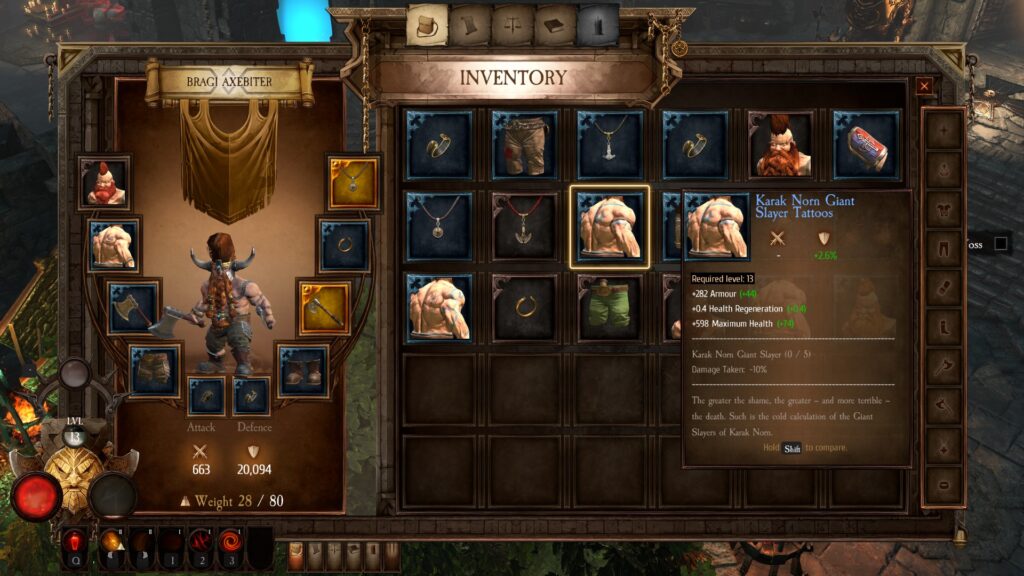
Your loot is also very expendable. I was swapping gear mid-quest a lot of times. You’ll often get a rare item, only to see it outclassed by an uncommon item a few minutes later. You rarely keep anything equipped for long, and will constantly be swapping items around to min-max your stats. There’s just nothing really cool or interesting to get attached to in Chaosbane like in most other ARPGs.
I hope this will change with the endgame content, but I’m not convinced. It’ll also potentially be a while before I can find out, because a lot of the endgame content will be released as post-launch updates. There is some endgame content and side activities in the game already, like Boss Rush and Expeditions, but most of it will be coming later on.
On the subject of endgame content and loot, I can’t exactly do a review of Chaosbane without bringing up some controversial decisions that the community has been talking about a lot lately. Yes, Chaosbane does feature unique XP, loot, fragment, and gold boosting passive abilities that were included in the Deluxe and Magnus Editions of the game.
These boosts are also being sold as DLC. As for what they are, they’re essentially special passive buffs you can equip that increase the XP, gold, etc. you get from drops. Most of these are fairly minor, and only increase your odds by 5%.
The Collectors Guild offers bonuses that are much higher and you can get those just by playing the game. But, there is one that could be a bit problematic, especially depending on what the endgame content ends of looking like.
One of these passives increases loot quality by 50%. That’s a fairly substantial increase. I even equipped the buff to see what kind of results I’d get, and…well, just look at this screenshot:

You see all those gold item drops? All but about two or three of them were from just a single quest where I used the buff, and many of these were random drops from trash mobs. If loot becomes a major part of the endgame and high tier difficulty levels, players that own the DLC could potentially be at a big advantage.
Then again, as I said earlier, the loot is fairly mundane and expendable, so its hard to tell if it’ll really matter in the end. Chaosbane is also a purely cooperative experience, so it doesn’t matter as much if you are getting better loot drops than your friends. Still, loot boosters are a slippery slope in this genre, and it feels kind of slimy to see them in the game.
The Season Pass DLC is also supposed to have some sort of booster as well in one of the packs. That’s probably the least of the Season Pass’s problems though, because honestly only one of the DLCs sounds even remotely interesting.
Given how distrustful many gamers are because of how long we’ve been jerked around by shady AAA publishers trying to squeeze every dime out of us, I certainly wouldn’t begrudge anyone who is really turned off by the idea of boosters being offered as DLC and part of a more expensive Deluxe Edition. Based on my time with Chaosbane so far, I’m not convinced that the boosters will have a particularly huge effect on your experience, but I’m fairly against it myself just based on principle.

While most of my past few paragraphs have been negative, I’d be lying if I said that I’m not having a decent amount of fun with Warhammer: Chaosbane. It certainly has many flaws, with some potentially being deal breakers for ARPG fans, but it’s core combat system is actually pretty fun and it has an interesting take on character progression.
I think there’s a pretty good ARPG here somewhere, and after a few post-launch updates and tweaks, it might end up being something genuinely really good. As it stands now though, Warhammer: Chaosbane just has too many flaws for me to give it a full recommendation just yet. It’s a game that has a lot of potential to be very good in the future if the main issues are addressed, but it just isn’t quite there yet.
Warhammer: Chaosbane was reviewed on Windows PC using a review copy provided by Bigben Interactive. You can find additional information about Niche Gamer’s review/ethics policy here.